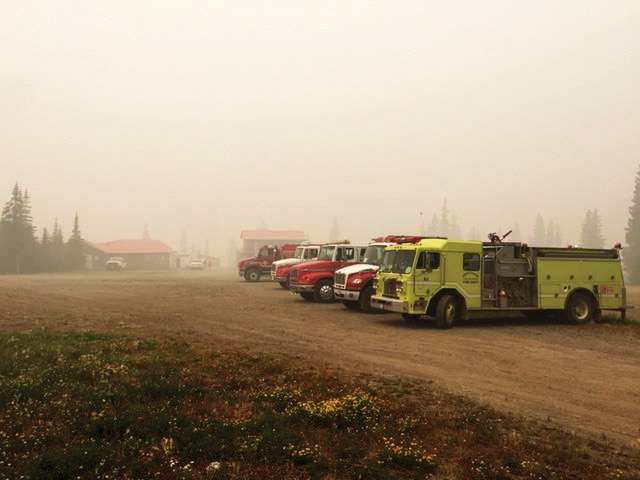The province says it’s earmarked $101 million to deal with wildfires this season, an increase of 58 per cent from the base funding of previous years, but Forests, Lands, Natural Resource Operations and Rural Development Minister Doug Donaldson acknowledges it may take more.
Both the 2017 and 2018 season set new records for number of fires and area burned.
“The money will be there to fight fires if needed, beyond that $101 million,” Donaldson told reporters during a March 19 conference call on preparations for the 2019 wildfire season.
Donaldson announced several new initiatives this year, including adding up to 80 new contract firefighters to supplement the 1,600 firefighters and support staff already available, increasing the length of contracts for firefighting aircraft to 120 days, undertaking a “comprehensive prescribed burning program,” and updating the technology available to the Wildfire Service such as night-vision equipment to help with early detection of fire starts.
Donaldson also said, “The BC Wildfire Service and the Office of the Fire Commissioner are working on an expanded structure protection program, which will provide additional resources in rural and wildland-urban interface areas.”
Sunshine Coast firefighters, and equipment, have travelled to other communities to aid with structure protection during both of the past two wildfire seasons.
Donaldson said he’s waiting for confirmation on the funding, but that part of improving the structure protection program will focus on better coordination of the various fire departments brought in from other communities. He gave the example of the Shovel Lake fire last season, where 10 different fire departments offered aid.
“When you get that kind of response it’s great, but you also need enhanced coordination,” he said. “We’re also talking about enhanced financial support for things like structural protection units that communities are looking for.”
Donaldson said the first funding announcements from the $50-million Community Resiliency Investment program set up last September to help local governments and First Nations do work to lower wildfire risks around their communities will be coming by the end of the month.
He also said for areas like the Sunshine Coast, with active logging near population centres, recent moves by the ministry will help reduce any wildfire risk from logging slash.
“We’re taking a number of issues in other areas of the ministry that would help address the amount of wood left behind after logging operations,” Donaldson said, citing the Coast Forest Sector Revitalization. “Part of that initiative will be better fibre utilization and removing residuals from areas that have been logged. Many people make the comment that it seems like there’s way too much left behind and we agree and we want to address that.”
Donaldson wrapped up his briefing by urging homeowners in rural and interface areas to make sure their properties are fire smart. He also reminded people heading into the forests that “things are dry already.”
“There’s personal responsibility as you undertake activities outdoors to make sure you’re not adding to the burden that we’re going to face,” Donaldson said.
There have been 297 wildfires in the Coastal Fire Centre region so far during the 2018 wildfire season, which officially ends March 31.



